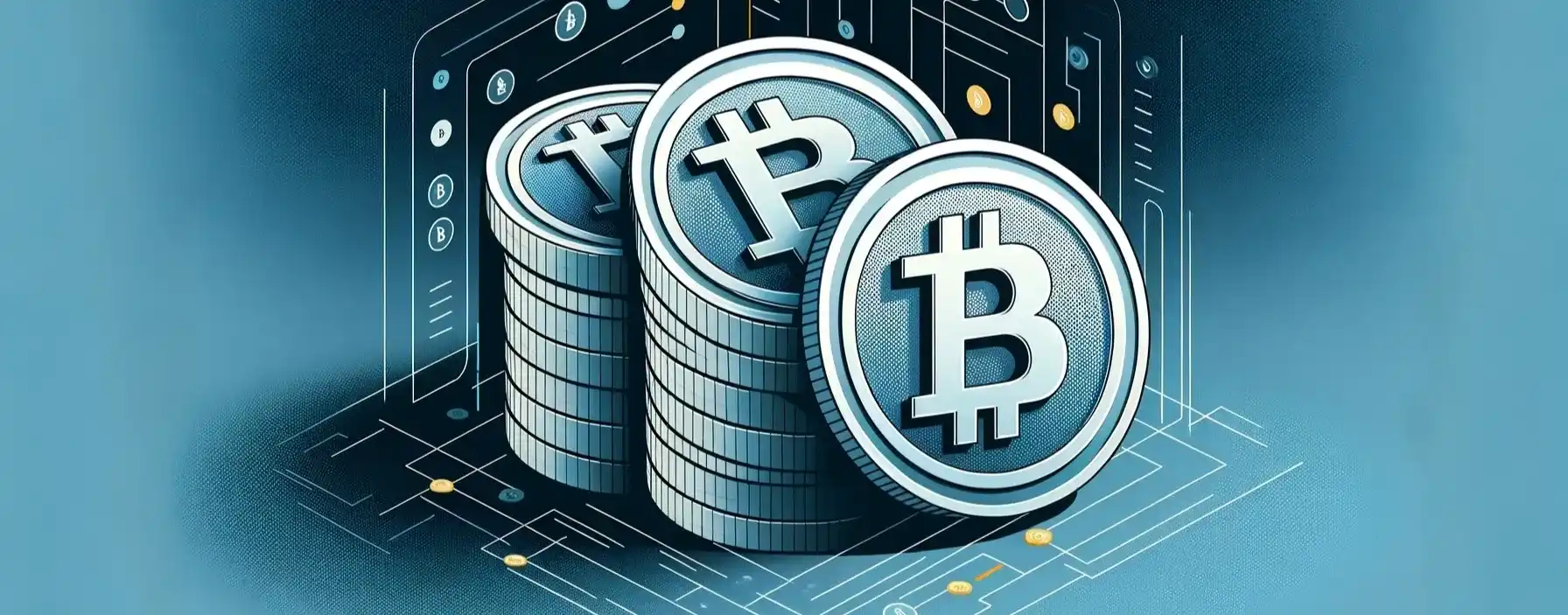How Many Bitcoins Are There (Left)? Bitcoin by the Numbers

Table of Contents
Bitcoin price is always a hot topic, especially since it has reached record value in anticipation of the 2024 halving event, but today, we are looking at different kind of numbers. To be more specific, we answer how many Bitcoins are there in circulation, how many Bitcoins are left, as well as how many have been lost.
Let’s do the math, shall we?
How Many Bitcoins Are There in Total?
The total supply of Bitcoin is capped at 21 million coins. This fundamental aspect of Bitcoin’s design was set by Satoshi Nakamoto, Bitcoin’s infamous anonymous creator. The artificial limit was imposed in order to introduce the idea of Bitcoin scarcity, which is supposed to mimic the finite amount of precious metals, such as gold, in real life.
The goal was to help maintain or increase Bitcoin’s value over time and prevent inflation, which is a common issue with fiat currencies where central banks can print more money. By having a capped supply, Bitcoin aims to preserve its purchasing power over the long term.
Here’s a deeper look at how this works:
Mining and Block Rewards
New bitcoins are minted through a process called mining, which involves solving complex mathematical problems to validate transactions and secure Bitcoin’s blockchain network. For this effort, miners are rewarded with Bitcoin.
This process introduces new Bitcoin into circulation. Now, when Bitcoin was introduced, the reward for mining a block started at 50 Bitcoins, but it has been halved approximately every four years thanks to the built-in mechanism known as Bitcoin halving.
Take a look at the connection between Bitcoin mining and halving in this video:
Halving Events
Halvings reduce the rate at which new Bitcoins are created and, as a result, the amount new coins entering circulation. The halving will happen every four yers until the block reward becomes so small that it rounds down to zero. The most recent halving occurred on April 19, 2024, after which the reward dropped to 3.125 Bitcoins per block.
| Five largest Bitcoin wallets hold more than 575,000 Bitcoins, which makes for 2.7% of all mined Bitcoins. Most of these are owned by exchanges. |
How Many Bitcoins Have Been Mined So Far?
Based on the latest data available, over 19 million Bitcoins have been mined so far. This represents more than 90% of the total supply of 21 million Bitcoins. Providing an exact number is somewhat tricky, since it can fluctuate slightly due to the nature of new blocks being mined, but the milestone of 19 million coins has already been reached.
How Many Bitcoins Are Left to Mine?
As to how much Bitcoin is left to mine, the number is just a bit fewer than 2 million bitcoins. It will take almost 120 years to mine those remaining coins. Now that we have answered how many Bitcoins are left to mine, let’s see how many are mined daily.
How Many Bitcoins Are Mined a Day?
The number of Bitcoins mined per day can be depends on the current block reward and the average time it takes to mine a block. Current block reward, as we have already mentioned, is 3.125 Bitcoins per block as a result of the 2024 Bitcoin halving.
On average, a new block is mined approximately every 10 minutes. To calculate the daily mining rate:
- 144 blocks are mined per day (24 hours divided by 10 minutes).
- 144 blocks are multiplied by the current block reward of 3.125 Bitcoins
This gives us:
144 x 3.125 = 450 Bitcoins per day.
So, approximately 450 Bitcoins are mined each day given the current block reward. This rate will remain until the next halving event, which is expected around 2028, when the block reward will reduce to 1.5625 Bitcoins. So far, we have covered how many Bitcoins are there and how many are left, so let’s take a closer look into how many are lost.
How Many Bitcoins Are Lost?
Although the Bitcoin blockchain is extremely secure, a certain number of coins have gone missing since Bitcoin’s inception in 2009. Estimating the exact number of lost Bitcoins is challenging because it depends on various factors.
Several analyses show that a significant chunk of the Bitcoins mined in the early years, when the cryptocurrency was less valuable and less well-known, might be lost forever. Some estimates even suggest that somewhere between 3 and 4 million Bitcoins are lost for good.
This most common reason behind lost or missing Bitcoins include:
- Lost Wallets – Early adopters who mined or purchased Bitcoins and stored them in wallets may have lost access by forgetting their private keys or losing the physical devices on which the wallets were stored.
- Inactive Wallets – Bitcoins that haven’t moved from their initial wallet addresses for years, especially those dating back to the early days of Bitcoin when it was worth little in fiat currency, are often considered lost.
- Deliberate Burn Addresses – Some Bitcoins are deliberately sent to unspendable addresses as a way of taking them out of circulation. These are considered lost because they cannot be recovered.
If we take into account how many Bitcoins are there, which is 19 million, 3 to 4 million lost coins represent about 15-20% of all Bitcoins ever mined. This loss impacts the effective circulation and can contribute to the scarcity of Bitcoin, which can potentially increase its market value.
Next up, let’s take a look at when will all Bitcoin be mined and how it might affect blockchain security in the long run.
When Will the Last Bitcoin Be Mined?
The last Bitcoin is expected to be mined around the year 2140. This estimate is based on the Bitcoin mining process and the future Bitcoin halving events. As previously explained, the mining reward will continue to halve every four years until it rounds down to zero.
Each Bitcoin slows down the rate at which new Bitcoins are issued, prolonging the time until the final Bitcoin will be mined. The final Bitcoin will be part of a block where the reward is just a fraction of a Bitcoin, stretching out over many years until virtually no new Bitcoins are left to mine.
| The Bitcoin network consumes an estimated 91 terawatt-hours of electricity per year, which is comparable to the energy usage of a small country. |
What Happens When All 21 Million Bitcoins Are Mined?
When all 21 million Bitcoins are mined, nothing dramatic will happen, but there will be some changes that will occur in the Bitcoin ecosystem and which will impact miners and the economic model of the blockchain for the most part.
These changes include:
- End of Mining Rewards – Once the 21 million cap is reached, there will be no new Bitcoins issued as mining rewards. Until then, miners receive both the block reward and transaction fees, but afterward, the reward will disappear.
- Shift to Transaction Fees – These fees are paid by users to prioritize their transactions for confirmation by the miners. As the reward decreases, these fees are expected to become a more significant part of miners’ incentives.
- Network Security Concerns – There are concerns about how Bitcoin’s security will be maintained once miners are only compensated with transaction fees. However, many believe that a higher transaction volume and potentially higher fees per transaction could be an adequate compensation.
- Economic Implications – The fixed supply of Bitcoin and its scarcity could potentially lead to an increase in Bitcoin’s value, especially as demand grows while supply remains capped.
- Potential Changes in User Behavior – With no new Bitcoins entering the system, users might become more conservative in spending Bitcoin, treating it more as a store of value than as a currency for daily transactions.
- Adoption and Technological Advances – By 2140, it is also likely that changes in blockchain technology, adoption rates, and regulations could alter how Bitcoin and its blockchain operate.
Overall, the end of Bitcoin mining rewards will mark a shift toward Bitcoin transaction fees for network security and potentially lead to higher interest in Bitcoin as a finite resource.
What the Future Holds for Bitcoin
Bitcoin won’t reach its capped limit of 21 million coins any time soon, so it’s safe to say that nothing will change about the way Bitcoin works in our lifetime. Its future remains certain, regardless of how many Bitcoins are there in circulation. The end of new Bitcoins entering circulation definitely be a huge milestone, and will shift the incentives from mining to transaction fees.
This may pose a challenge to network’s security but could also stabilize Bitcoin’s value as a deflationary asset, potentially boosting its appeal as “digital gold”. Also, Bitcoin could see a wider global integration as traditional and digital finances become more and more intertwined.
All things considered, it will be exciting see to Bitcoin make its way from from a niche digital novelty to a mainstream financial asset.






